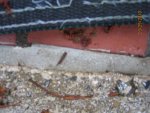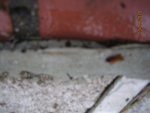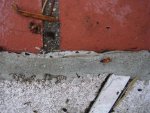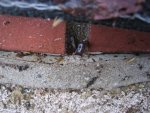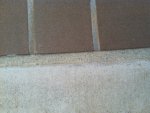I have to replace the caulk around the whole pool. It was done by a pro 2 years ago and is completely cracked in lot of places, separating off the concrete and the pool. When I pulled some of it off, the foam was wet underneath, so obviously it is not doing its job. I have couple of questions:
1. In some places the old caulk is coming out very easy, but there are couple of spots that it is nearly impossible to remove. That makes me wonder if there is some factor during installation that makes it stick better?
2. There is a gap between the foam backer and the concrete/pool. I've been reading that the backer should be wider than the hole - is than an issue?
3. I used a can of Sikaflex SL (self leveling) and I suck at caulking I would honestly would have hired someone if the previous caulk didn't fail after 2 years...But now that it did, I am hesitant that a pro will necessary do a better job than me. At close inspection the old caulking was not as perfect as I would have liked either. I tried taping around the perimeter and that didn't work too well either. Any advice on how to do this?
I would honestly would have hired someone if the previous caulk didn't fail after 2 years...But now that it did, I am hesitant that a pro will necessary do a better job than me. At close inspection the old caulking was not as perfect as I would have liked either. I tried taping around the perimeter and that didn't work too well either. Any advice on how to do this?
4. How far over the joint should the caulk go: just fill the gap or spill over to ensure seal with both surfaces?
Thanks for any advice!
1. In some places the old caulk is coming out very easy, but there are couple of spots that it is nearly impossible to remove. That makes me wonder if there is some factor during installation that makes it stick better?
2. There is a gap between the foam backer and the concrete/pool. I've been reading that the backer should be wider than the hole - is than an issue?
3. I used a can of Sikaflex SL (self leveling) and I suck at caulking
4. How far over the joint should the caulk go: just fill the gap or spill over to ensure seal with both surfaces?
Thanks for any advice!


